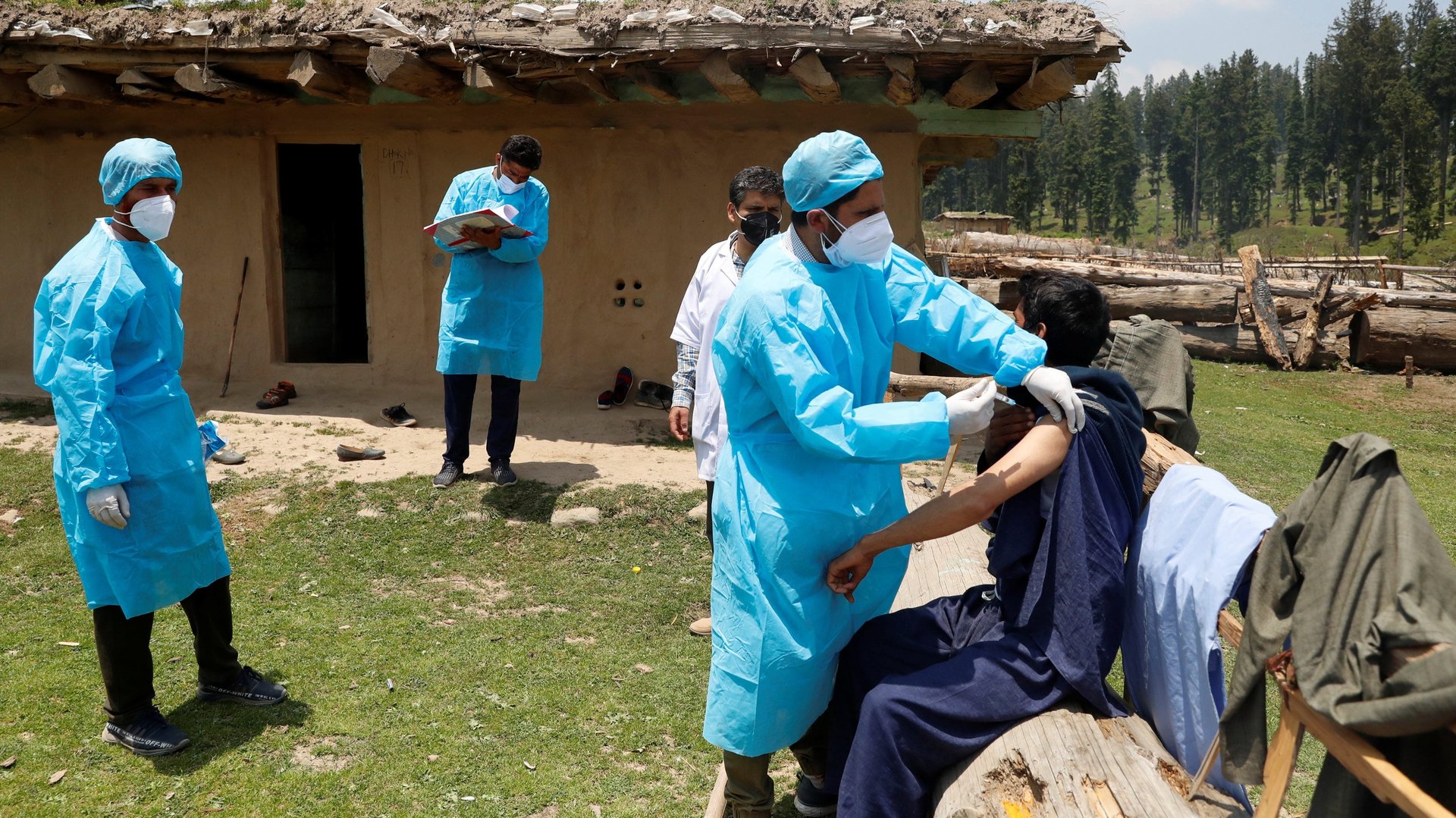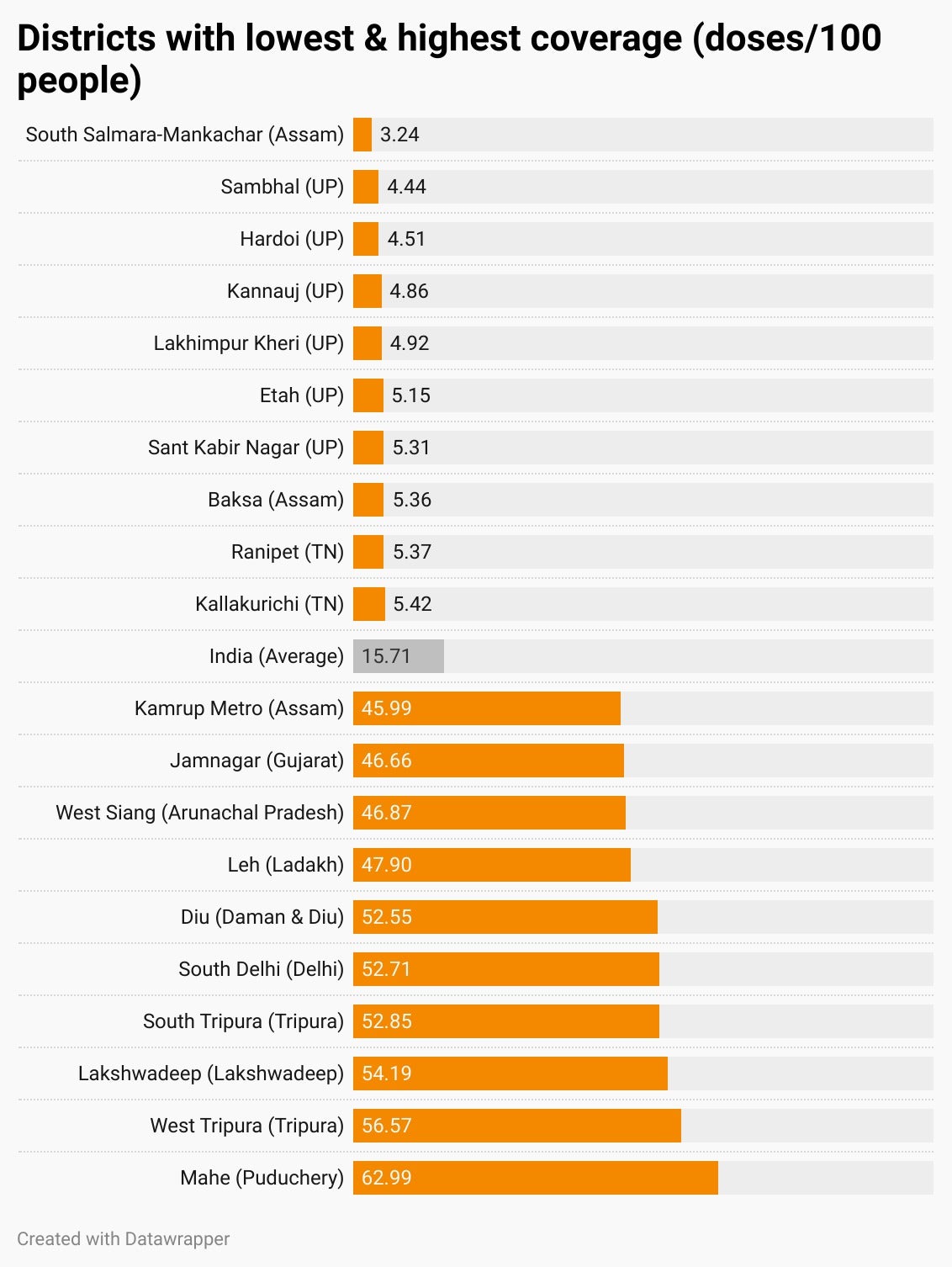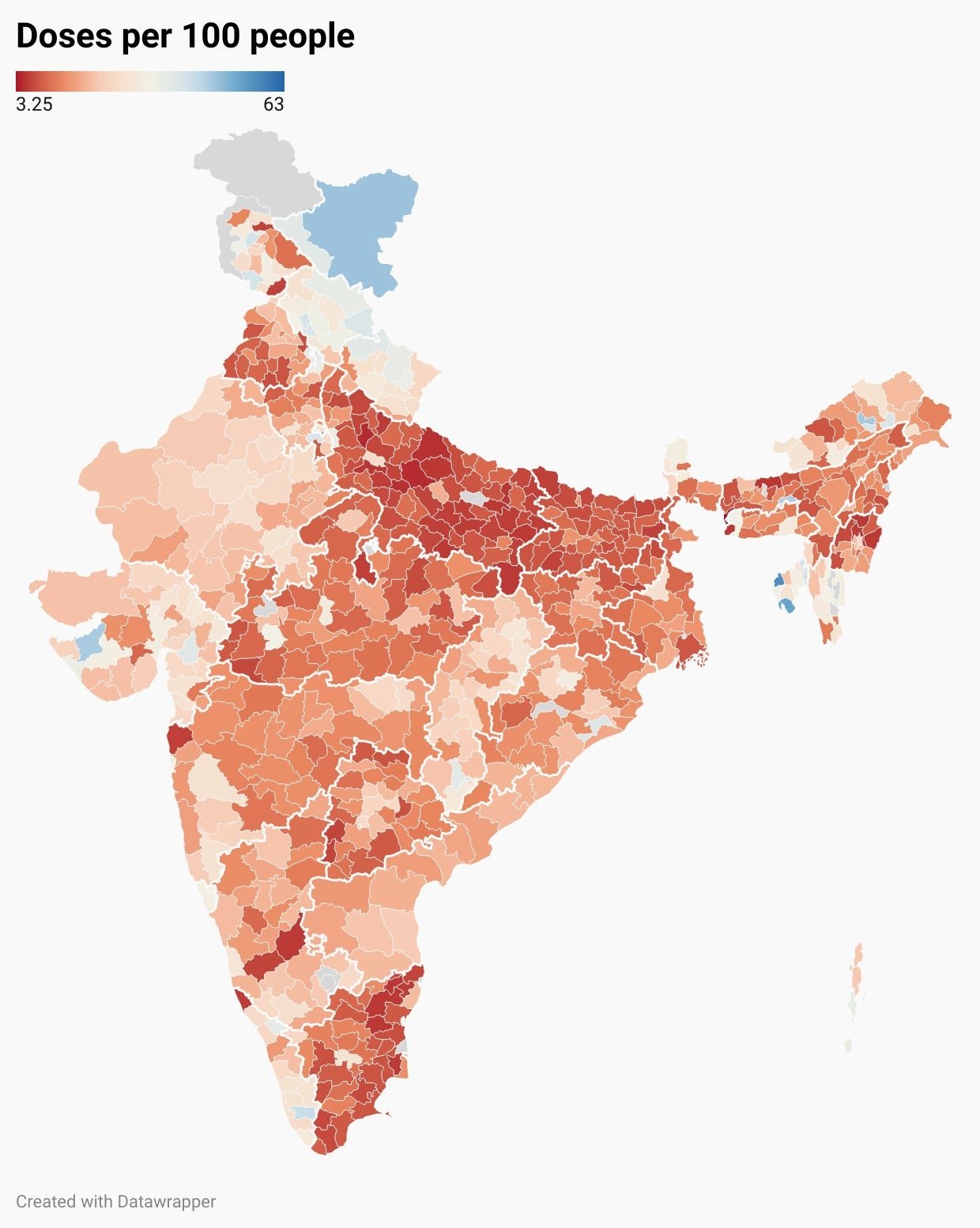India’s slow-moving vaccination programme is also riddled with regional disparities
Of the 10 districts with the lowest vaccination coverage in India, six are from Uttar Pradesh, shows an analysis of official data from the government’s Cowin platform by Scroll.in.


Of the 10 districts with the lowest vaccination coverage in India, six are from Uttar Pradesh, shows an analysis of official data from the government’s Cowin platform by Scroll.in.
The district with the worst vaccine coverage in the country is South Salmara-Mankachar. The western Assam district, bordering Bangladesh, has administered only 3.2 doses per 100 people.
South Salmara-Mankachar is not the only Assam district to feature in the bottom 10. There is also Baksa, one of the four districts that make up the Bodoland Territorial Region.
The six Uttar Pradesh districts at the bottom of the pile are Sambhal, Hardoi, Kannauj, Lakhimpur Kheri, Etah, and Sant Kabir Nagar.
Two north Tamil Nadu districts, Ranipet and Kallakurichi, complete the bottom 10.
Conversely, as many as three districts from the North East are among the top 10 performers in the country. Two of them are from Tripura, while the third is Assam’s Kamrup Metropolitan district which houses Guwahati and capital Dispur.
Puducherry’s Mahe boasts of the best coverage pan-India with 63 doses per 100 people. This includes both doses.
In the metros
Scroll.in’s analysis is based on vaccination data accessed on CoWin on June 3, and population estimates for 2020 prepared by Geographic Insights Dataverse, Harvard University.
Among metro districts, South Delhi emerges as the top performer. Nearly 53 doses have been administered per 100 people in the district.
However, that number sharply drops to less than half—23 doses—for the capital city as a whole. One must note, though, that in Delhi, it is entirely likely that residents did not necessarily get vaccinated in the districts where they live.
Chennai with over 40 doses per 100 people has the highest coverage among the metros, closely followed by Kolkata with 39.53 doses.
Mumbai has given 34.14 doses per 100 people, and Bengaluru Urban is marginally lower at 32.3 doses.

Newly formed and rural
Except for Tamil Nadu’s Ranipet, almost all the other bottom 10 districts are largely rural.
Many of them are relatively new districts. As many as seven have been in existence for less than 25 years, out of which four of them were formed less than five years ago.
South Salmara-Mankachar with the lowest coverage was notified as a district in 2016.
Sambhal, carved out of Moradabad and Budaun in 2013, has a history of vaccine hesitancy. The area witnessed stiff resistance during the pulse polio campaign too.
Disparities within state boundaries
Our analysis also revealed significant disparities within a state.
The case of Tamil Nadu stands out. While Chennai is the best performer among all of India’s bigger metros, the coverage in 34 of the state’s 37 districts is less than the national average. (There is no separate data on CoWin for Mayiladuthurai, the state’s newest and 38th district; it is included as part of Nagapattinam.)
Ditto with Assam. While the capital district of Kamrup Metro features among the country’s top 10 districts, 30 of the state’s 33 districts fare worse than the national average.

North East troubles
The North East, as a whole, has also witnessed great regional disparities. While six districts from the region feature among the top twenty in the country, the coverage in 72 of the 115 districts in the region is less than the national average. (Some of the newly formed districts in the region do not have separate data on CoWin.)
Of them, 61 are from Assam, Manipur, Meghalaya, and Nagaland. The four states account for 71 of the 115 districts in the region. In other words, the performance of more than 85% of the districts in these four states is below the national average.
Rajasthan, the stand-out performer
Among the bigger states doing better than the national average, Rajasthan and Andhra Pradesh have the most equitable distribution among districts.
Rajasthan is also the only one among India’s large states where all its districts are doing better than the national average.
On the other hand, the coverage in all of Bihar’s 38 districts is less than the national average.
This article first appeared on Scroll.in. We welcome your comments at [email protected].